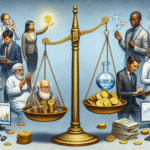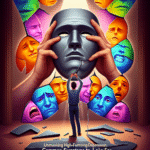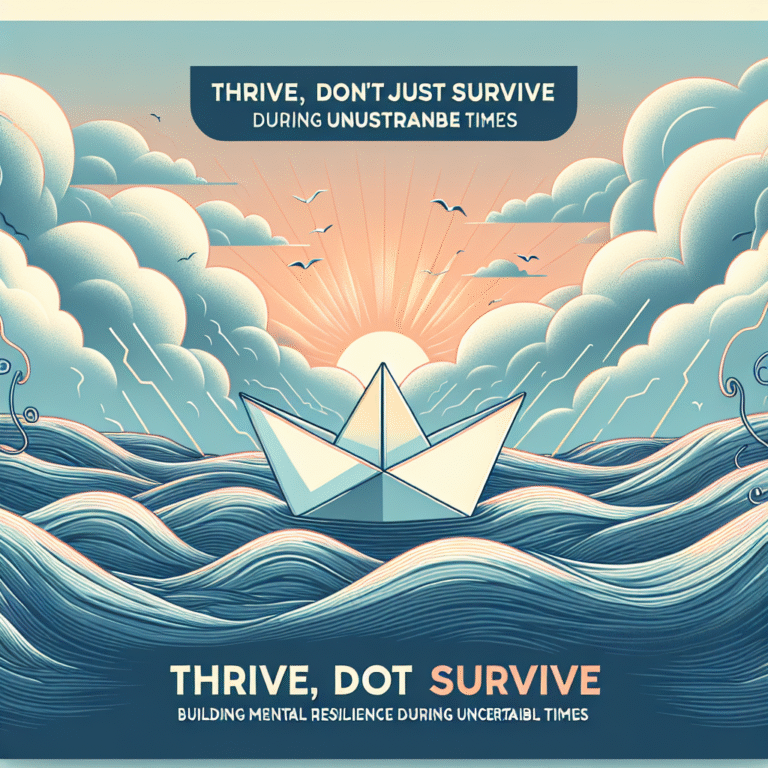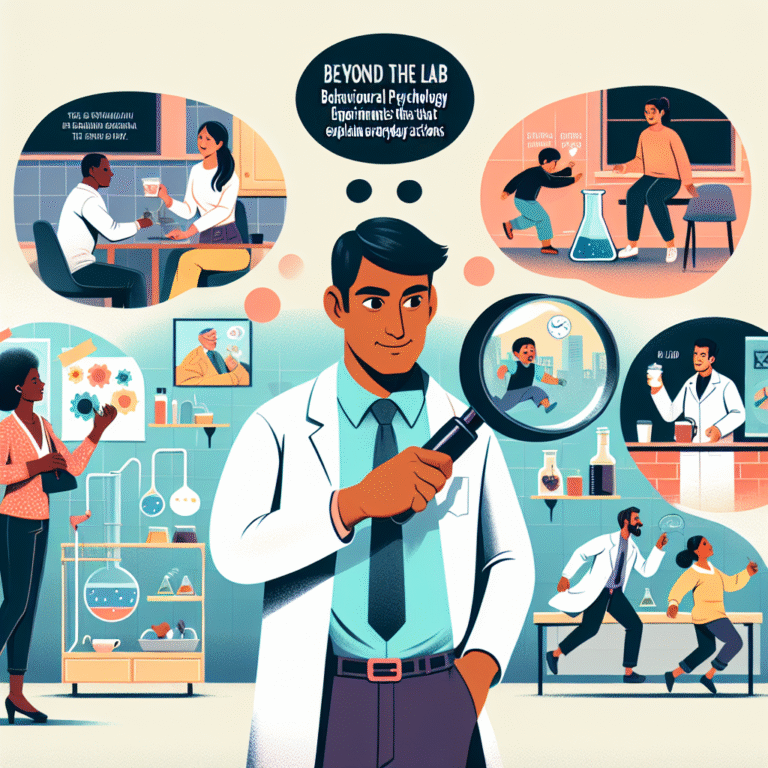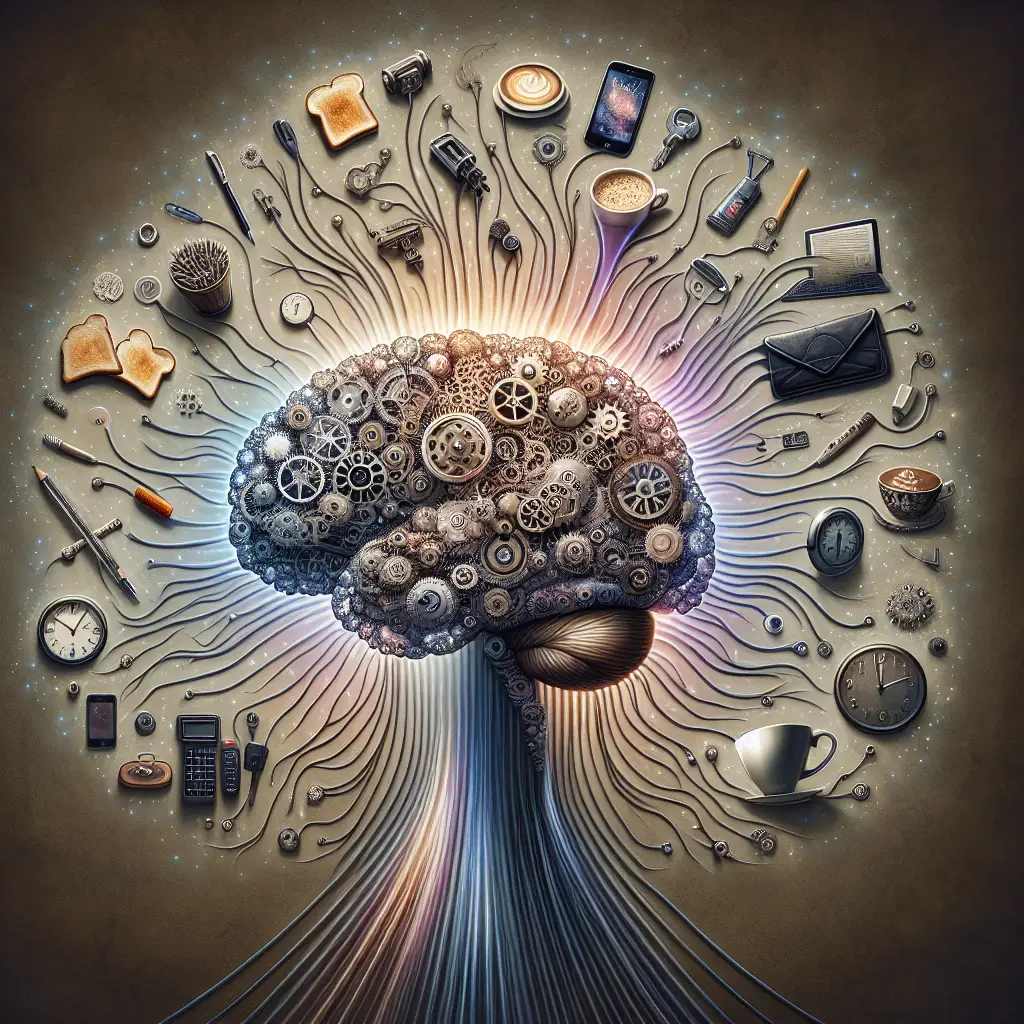
The Mind Unveiled: Understanding the Psychology Behind Our Everyday Decisions
Introduction
Have you ever paused to consider why you chose that particular meal at dinner or decided against your usual route home? The decisions we make daily may seem trivial, yet they are crucial reflections of our minds and the complex psychological processes that drive them. In "The Mind Unveiled: Understanding the Psychology Behind Our Everyday Decisions," we will explore how our choices are influenced by a multitude of factors, ranging from the subconscious to the contexts in which we find ourselves. By revealing the intricate workings behind our decision-making, we aim to empower you to take control of your choices, leading to improved outcomes in various aspects of your life.
The Power of Decision-Making
The Framework of Decision Psychology
Understanding the psychology behind our decisions requires a look at several frameworks that psychologists and researchers have developed over the years. Decision-making encompasses cognitive processes, emotional influences, social contexts, and individual differences. At its core, decision-making theory can be broken down into two main categories: rational and irrational decision-making.
-
Rational Decision-Making: This is the standard, logical approach where individuals weigh options, consider consequences, and act based on objective analysis. The Rational Choice Theory often comes into play here, suggesting that people make decisions that maximize their utility.
- Irrational Decision-Making: In stark contrast, our everyday decisions are often influenced by biases, emotions, and social pressures, leading us to choices that may not align with logical reasoning. Concepts taught in Behavioral Economics, such as prospect theory, illustrate how our decisions can be swayed by how choices are presented and perceived risks.
Table 1: Rational vs. Irrational Decision-Making
| Feature | Rational Decision-Making | Irrational Decision-Making |
|---|---|---|
| Basis | Logical reasoning | Emotional and cognitive biases |
| Process | Systematic evaluation | Heuristic shortcuts |
| Outcome | Optimal choices based on data | Suboptimal influenced by context |
| Time Investment | High (requires contemplation) | Low (quick, often impulsive) |
| Examples | Choosing investments wisely | Impulse buying |
Case Study: The Paradox of Choice
To illustrate the complexities of decision-making, we look at the famous "Paradox of Choice" study conducted by psychologist Barry Schwartz. Schwartz found that while having options can enhance our sense of freedom, too many choices can lead to paralysis and dissatisfaction. In one experiment, consumers were offered a choice between 24 flavors of jam and only 6 flavors. While the larger selection attracted more customers, those who sampled the smaller selection were more likely to make a purchase.
Analysis
This study serves as a compelling example of "The Mind Unveiled: Understanding the Psychology Behind Our Everyday Decisions." It highlights the impact choice overload has on our decision-making processes and shows that sometimes less is more—simplifying choices can lead to better outcomes.
The Role of Emotions
Emotional Influence on Decisions
Emotions are pivotal in decision-making, often taking precedence over cognitive thought. Daniel Kahneman, a Nobel laureate, describes the dual-system theory where System 1 is intuitive and emotional, while System 2 is more deliberate and logical. Most of our everyday decisions are made using System 1, which can lead to impulsivity and biases.
Chart 1: Kahneman’s Dual-System Theory
| System | Description | Decision Type |
|---|---|---|
| System 1 | Fast, automatic, emotional | Snap judgments |
| System 2 | Slow, deliberate, logical | Thoughtful decisions |
Case Study: Emotional Decision-Making
Research by the Harvard Business School presented scenarios where participants had to choose between a guaranteed gain versus a higher-risk option. Findings showed participants with high anxiety preferred the guaranteed outcome, while those less anxious were more inclined to take risks.
Analysis
This case underscores how our emotional states significantly impact our decision-making processes, demonstrating that in "The Mind Unveiled: Understanding the Psychology Behind Our Everyday Decisions," emotions can dictate choices more than logical reasoning.
Social Influence on Decisions
The Social Context
Humans are inherently social beings, and the desire to conform and gain social approval often sways our everyday decisions. Social influence manifests through peer pressure, informational influence, and even cultural norms.
Case Study: The Asch Conformity Experiment
In the 1950s, Solomon Asch conducted a series of experiments that showcased the power of social influence. Participants often agreed with the incorrect majority answer when it came to visual perception, demonstrating how the presence of a group could alter individual judgment.
Analysis
This experiment vividly illustrates the theme of "The Mind Unveiled: Understanding the Psychology Behind Our Everyday Decisions." It highlights how susceptible we are to social pressures, able to override our own perceptions and beliefs for the sake of conformity.
Cognitive Biases in Decision-Making
Unable to Escape Biases
Cognitive biases shape our perceptions and ultimately influence our decisions, often leading us to make irrational choices. Here are several notable cognitive biases that are particularly relevant to understanding our everyday decisions:
- Confirmation Bias: The tendency to search for, interpret, and remember information that confirms our preexisting beliefs.
- Anchoring Effect: Relying too heavily on the first piece of information encountered (the "anchor") when making decisions.
- Overconfidence Bias: An individual’s subjective confidence in their judgments is reliably greater than their objective accuracy.
Table 2: Common Cognitive Biases
| Bias | Effect | Real-World Implication |
|---|---|---|
| Confirmation Bias | Reinforces existing beliefs | Poor decisions in hiring |
| Anchoring Effect | Inflates the importance of initial data | Real estate pricing |
| Overconfidence Bias | Leads to excessive risk-taking | Investment failures |
Case Study: Hiring Decisions
A study examined hiring practices where biases such as the confirmation bias and anchoring effect played a significant role. Employers frequently relied on their first impression of a candidate (the anchor) and tended to overlook qualifications that contradicted their initial judgments.
Analysis
The impact of cognitive biases in the hiring process highlights "The Mind Unveiled: Understanding the Psychology Behind Our Everyday Decisions." Recognizing these biases is critical to making more informed, rational decisions.
Strategies to Improve Decision-Making
Mindfulness and Awareness
One of the most effective strategies to improve our decision-making abilities is adopting mindfulness practices. By becoming more aware of our thoughts and emotions in the moment, we can make intentional choices rather than be swayed by impulsivity or biases.
Tips for Mindful Decision-Making:
- Pause and Reflect: Take a moment to consider the options at hand and how your emotions may be influencing your choice.
- Seek Diverse Perspectives: Engage with others to gather varied viewpoints that may challenge your own biases.
- Limit Choices: Whenever possible, simplify your options to avoid feeling overwhelmed.
Case Study: Corporate Decision-Making
Companies that implemented regular mindfulness training for their employees observed a significant reduction in impulsive choices, driving improved outcomes in strategic decision-making.
Analysis
This example illustrates the real-world applicability of "The Mind Unveiled: Understanding the Psychology Behind Our Everyday Decisions." Adopting mindful strategies can enhance our decision-making abilities and lead to more beneficial outcomes.
The Influence of Environment on Decisions
Contextual Cues
The immediate environment plays a significant role in our decision-making processes. Factors such as layout, design, and even the presence of others can subtly guide our choices.
Case Study: Store Layout and Consumer Behavior
Studies have shown that the layout of a store significantly affects consumer purchases. Products placed at eye level or featured prominently can increase sales because consumers are more likely to choose items that are easily visible.
Analysis
Understanding the impact of environmental cues reveals further insights into "The Mind Unveiled: Understanding the Psychology Behind Our Everyday Decisions." This knowledge can be utilized in various contexts to encourage more favorable choices.
Conclusion
By unveiling the complexities behind our everyday decisions, we gain insights that can enhance our lives. Whether through understanding cognitive biases that distort our judgement or recognizing the profound effect emotions, social influences, and environment can have on our choices, we empower ourselves to make more informed, intentional decisions.
Successful decision-making is attainable—it requires awareness, practice, and a willingness to confront our habitual patterns. In this article, we explored how personal and external factors shape our choices, ultimately providing you with actionable insights to apply in real life. Your mind is a powerful tool; use it wisely, and you’ll find clarity in your decisions.
FAQs
-
What is the "Paradox of Choice"?
The paradox of choice refers to the phenomenon where too many options can lead to decision paralysis and dissatisfaction. -
How do emotions affect our decisions?
Emotions often guide our decision-making process, leading to choices influenced more by feelings than logic. -
What are cognitive biases?
Cognitive biases are systematic thinking errors that affect our decisions, leading to irrational conclusions. -
How can mindfulness improve decision-making?
Mindfulness helps increase awareness of thoughts and emotions, allowing for more intentional and rational decision-making. - What role does social influence play in decision-making?
Social influence can push individuals towards conformity, often leading them to override their personal beliefs or perceptions to align with group norms.
This comprehensive exploration of "The Mind Unveiled: Understanding the Psychology Behind Our Everyday Decisions" aims to inspire you to approach your decision-making process with curiosity and a commitment to better choices. By applying the insights shared in this article, you will move toward more mindful, considered decision-making, ultimately leading to a more satisfying and intentional life.
